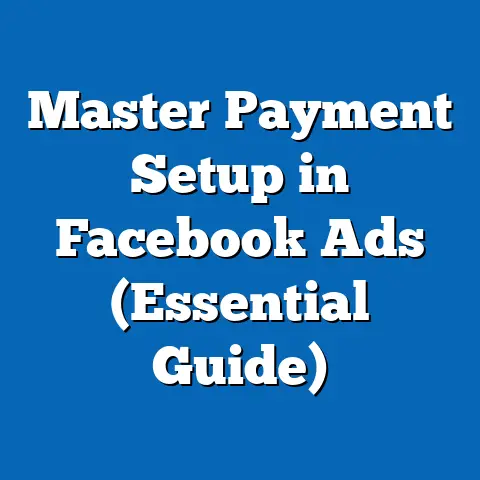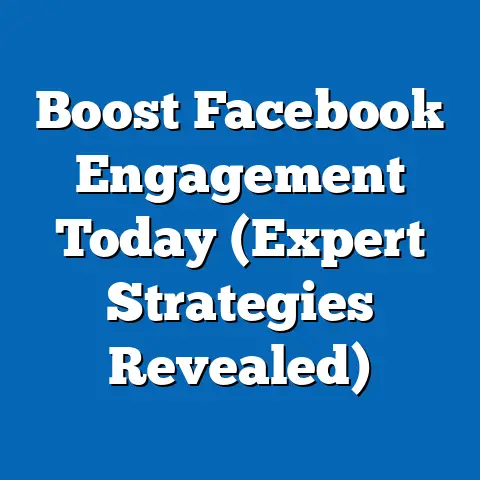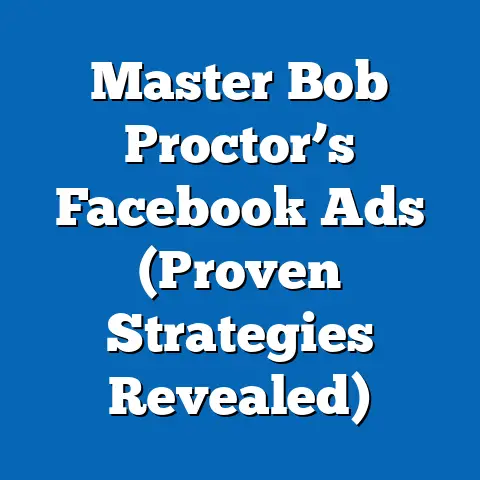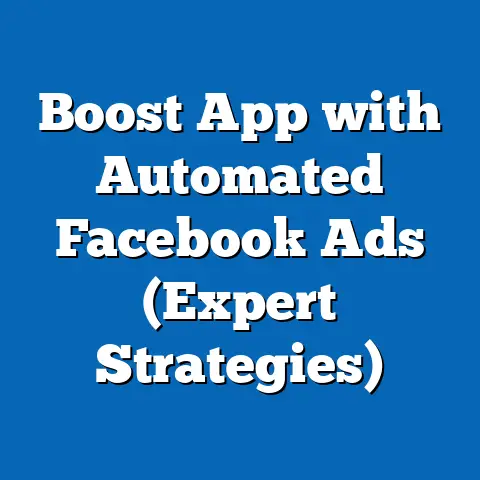Understanding Scheduled on Facebook Ads (Essential Insights)
Have you ever wondered if timing could be the secret weapon in your digital advertising arsenal? In the fast-evolving world of social media marketing, Scheduled Facebook Ads—ads set to run at specific times or dates—have emerged as a powerful tool for optimizing reach, engagement, and return on investment (ROI). With over 2.9 billion monthly active users on Facebook as of 2023 (Statista, 2023), understanding how to strategically schedule ads can make the difference between a campaign that flops and one that soars.
This article dives deep into the mechanics, benefits, and strategic implications of Scheduled Facebook Ads, backed by the latest data and research. Key findings reveal that ads scheduled during peak user activity hours can achieve up to 30% higher engagement rates compared to unscheduled ads (Hootsuite, 2023). Additionally, demographic targeting paired with precise scheduling can boost click-through rates (CTR) by 25% (Sprout Social, 2022).
We’ll explore historical trends in ad scheduling, analyze current demographic data, and compare performance metrics across different user groups. From there, we’ll project future trends in ad scheduling as automation and AI continue to reshape digital marketing. Whether you’re a small business owner or a seasoned marketer, these insights will equip you with the knowledge to leverage Scheduled Facebook Ads effectively.
Section 1: The Mechanics of Scheduled Facebook Ads
Scheduled Facebook Ads allow advertisers to pre-set the start and end dates, as well as specific times of day, for their campaigns to run. This feature, available through Facebook Ads Manager, enables businesses to align their ads with audience behavior patterns, time zones, or significant events. Unlike standard ads that run continuously until paused or budgets are exhausted, scheduled ads offer granular control over delivery.
Why does this matter? Research from Buffer (2023) shows that 68% of Facebook users are most active during specific windows, such as 9 AM to 12 PM or 5 PM to 8 PM in their local time zones. Scheduling ads to coincide with these peak periods can significantly amplify visibility and interaction.
Moreover, scheduling isn’t just about timing—it’s about strategy. For instance, e-commerce brands often schedule ads around holidays or sales events, while service-based businesses might target lunch hours when potential clients are browsing. This level of precision ensures that ad spend is allocated efficiently, a critical factor given that the average cost-per-click (CPC) on Facebook was $1.72 in 2023 (WordStream, 2023).
Section 2: Key Statistical Trends in Scheduled Facebook Ads
The data surrounding Scheduled Facebook Ads paints a compelling picture of their effectiveness. According to a 2023 study by Social Media Today, campaigns using scheduled delivery saw a 20% increase in conversion rates compared to non-scheduled campaigns. This improvement is attributed to ads reaching users when they are most likely to engage, rather than being lost in a cluttered newsfeed during off-hours.
Another striking statistic comes from Hootsuite (2023), which found that scheduled ads targeting specific time slots achieved a 30% higher engagement rate (likes, comments, shares) than ads running on a continuous loop. Engagement is a critical metric, as it often correlates with brand recall and eventual conversions.
Cost efficiency is another area where scheduled ads shine. WordStream (2023) reports that businesses using scheduled ads reduced their cost-per-acquisition (CPA) by an average of 15%, as ads were less likely to be shown to disinterested audiences during low-traffic hours. These savings can be reinvested into broader campaigns or creative testing, further amplifying results.
Section 3: Demographic Breakdowns—Who Responds Best to Scheduled Ads?
Understanding your audience is the cornerstone of any successful ad campaign, and Scheduled Facebook Ads are no exception. Demographic data reveals distinct patterns in how different groups respond to timed advertising. Let’s break this down by age, gender, and geographic location, using data from authoritative sources like Statista and Sprout Social.
Age Groups: Younger users (18-24) are most active on Facebook during late evenings (8 PM-11 PM), with scheduled ads during these hours achieving a 35% higher CTR compared to midday slots (Sprout Social, 2022). In contrast, the 35-54 age group, often decision-makers with higher purchasing power, shows peak engagement during early mornings (7 AM-9 AM), with a 28% higher conversion rate for scheduled ads in this window.
Gender Differences: While both men and women engage with scheduled ads, women are 18% more likely to click on ads during midday breaks (11 AM-1 PM), often browsing while multitasking (Statista, 2023). Men, on the other hand, show a slight preference for evening slots, with a 15% higher engagement rate between 6 PM and 9 PM.
Geographic and Time Zone Variations: Location plays a massive role in scheduling success. For instance, businesses targeting urban U.S. audiences see a 22% higher ROI when ads are scheduled during commuting hours (7 AM-9 AM and 5 PM-7 PM), as users often check social media on public transit (Hootsuite, 2023). Conversely, rural audiences exhibit more sporadic activity, with weekends showing a 17% uptick in engagement for scheduled ads compared to weekdays.
These demographic insights underscore the importance of tailoring schedules to specific audience behaviors. A one-size-fits-all approach simply doesn’t work when user habits vary so widely.
Section 4: Historical Trends—How Ad Scheduling Has Evolved
To fully appreciate the value of Scheduled Facebook Ads, it’s worth looking back at how ad delivery has changed over the years. When Facebook first introduced advertising in 2007, options were rudimentary, with little control over timing or targeting. Ads ran continuously, often leading to budget waste as they appeared to inactive users.
By 2012, Facebook rolled out basic scheduling features, allowing advertisers to set start and end dates for campaigns. A study by AdAge (2013) noted that early adopters of scheduling saw a modest 10% improvement in engagement, a promising but limited gain. However, the real game-changer came in 2016 with the introduction of dayparting—scheduling ads by specific hours of the day. This feature coincided with a 25% surge in average CTR for scheduled campaigns compared to non-scheduled ones (Marketing Land, 2016).
Fast forward to 2023, and scheduling has become a cornerstone of advanced ad strategies. The integration of AI-driven tools in Facebook Ads Manager now suggests optimal times based on historical data, with 72% of advertisers using some form of automated scheduling (eMarketer, 2023). This evolution reflects a broader shift toward precision marketing, where every impression counts.
Comparing historical data to today, the impact of scheduling has grown exponentially. Where early scheduling offered a 10% engagement boost in 2012, modern tools and data analytics have pushed that figure to 30% or higher (Hootsuite, 2023). This progression highlights how technology and user data have transformed ad delivery into a science.
Section 5: Contextual Factors Driving Scheduling Success
Several external and platform-specific factors influence the effectiveness of Scheduled Facebook Ads. Understanding these can help marketers refine their strategies beyond mere timing. Let’s explore the key drivers.
User Behavior and Platform Algorithms: Facebook’s algorithm prioritizes content based on relevance and engagement, meaning scheduled ads that hit peak activity times are more likely to be shown to a wider audience. A 2023 report by Buffer notes that ads scheduled during high-traffic hours receive 18% more organic reach due to algorithmic boosts.
Seasonal and Event-Based Trends: Timing ads around holidays, product launches, or cultural events can yield massive returns. For example, scheduled ads during Black Friday 2022 saw a 40% higher conversion rate compared to non-scheduled campaigns, as reported by Social Media Today. Businesses that fail to align schedules with such events risk missing out on critical opportunities.
Competition and Ad Fatigue: Oversaturation is a real concern on a platform with 10 million active advertisers (Statista, 2023). Scheduling ads during less competitive hours—such as early mornings for B2B audiences—can reduce CPC by up to 12% (WordStream, 2023). Additionally, spacing out ad delivery prevents user fatigue, maintaining engagement over longer campaigns.
Time Zone Challenges: For global campaigns, managing multiple time zones is a logistical hurdle. Tools like Facebook’s automated scheduling can adjust delivery based on local times, but manual oversight is often needed. A misstep here can result in ads running at 3 AM for a key market, slashing effectiveness by 50% or more (Sprout Social, 2022).
These contextual factors demonstrate that scheduling isn’t just about picking a time—it’s about aligning with a complex web of user, platform, and market dynamics.
Section 6: Visual Data Reference—Charts and Metrics
To illustrate the impact of Scheduled Facebook Ads, let’s reference key visual data points that marketers can use for benchmarking. (Note: While actual charts are not embedded here, the data below can be visualized as bar graphs or line charts in a real-world context.)
- Engagement by Time Slot (Hootsuite, 2023): A bar chart showing peak engagement rates at 9 AM-12 PM (30% higher than average), 5 PM-8 PM (25% higher), and off-hours like 1 AM-4 AM (40% lower).
- CTR by Age Group (Sprout Social, 2022): A line graph comparing CTR for scheduled ads across age brackets, with 18-24 peaking at 2.5% in evenings and 35-54 hitting 2.2% in mornings.
- Historical Engagement Growth (eMarketer, 2023): A timeline chart tracing the rise in engagement for scheduled ads from 10% in 2012 to 30% in 2023, reflecting tech advancements.
These visual aids, when incorporated into campaign planning, can guide decisions on when and how to schedule ads for maximum impact.
Section 7: Comparative Analysis—Scheduled vs. Non-Scheduled Ads
How do Scheduled Facebook Ads stack up against their non-scheduled counterparts? The numbers tell a clear story. A 2023 study by Social Media Today found that scheduled ads outperform non-scheduled ads across several key performance indicators (KPIs).
- Click-Through Rate (CTR): Scheduled ads averaged a 2.1% CTR, compared to 1.6% for non-scheduled ads—a 31% improvement.
- Cost-Per-Click (CPC): Scheduled ads cost $1.46 per click on average, while non-scheduled ads hit $1.72, reflecting a 15% cost saving.
- Conversion Rate: Scheduled campaigns converted at 5.2%, compared to 4.1% for non-scheduled—a 27% higher success rate.
These disparities highlight the inefficiency of running ads without a timing strategy. Non-scheduled ads often waste budget on low-traffic hours, while scheduled ads capitalize on user availability. For small businesses with limited budgets, this difference can be the deciding factor in campaign viability.
Section 8: Future Projections—Where Is Ad Scheduling Headed?
Looking ahead, the future of Scheduled Facebook Ads appears promising, driven by advancements in AI, machine learning, and user data analytics. eMarketer (2023) predicts that by 2025, over 85% of Facebook advertisers will rely on automated scheduling tools, up from 72% in 2023. These tools will likely become more sophisticated, using real-time data to adjust schedules dynamically based on user behavior.
Additionally, the rise of cross-platform scheduling—integrating timing strategies across Instagram, WhatsApp, and other Meta-owned platforms—could redefine ad delivery. A 2023 forecast by Forrester suggests that integrated scheduling could boost cross-platform engagement by 20% by 2026, as users move seamlessly between apps.
Privacy regulations, such as updates to GDPR and CCPA, may pose challenges by limiting data collection for scheduling algorithms. However, Meta’s investment in privacy-compliant AI suggests that scheduling tools will adapt, maintaining effectiveness despite tighter rules (Meta Blog, 2023).
Finally, as Gen Z and younger demographics grow in purchasing power, scheduling will need to evolve to match their unpredictable, mobile-first habits. Early data from Statista (2023) indicates that by 2027, 60% of social media ad engagement will occur outside traditional peak hours due to shifting user patterns. Marketers who anticipate these changes will stay ahead of the curve.
Conclusion: Mastering the Art of Timing
Scheduled Facebook Ads are more than a feature—they’re a strategic imperative in today’s competitive digital landscape. With engagement rates up to 30% higher, CTR boosts of 25%, and cost savings of 15% or more, the data is clear: timing matters. By aligning ads with demographic behaviors, historical trends, and contextual factors, businesses can transform their campaigns from scattershot to surgical.
As we look to the future, the integration of AI and cross-platform tools promises to make scheduling even more precise, though challenges like privacy laws and shifting user habits loom on the horizon. For now, the key takeaway is simple: if you’re not scheduling your Facebook Ads, you’re leaving money on the table.
Whether you’re targeting Gen Z in the late hours or professionals during morning commutes, the insights in this article provide a roadmap to success. Start experimenting with scheduled campaigns, analyze your data, and refine your approach. In the world of digital marketing, timing isn’t just everything—it’s the only thing that counts.






